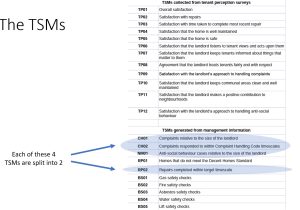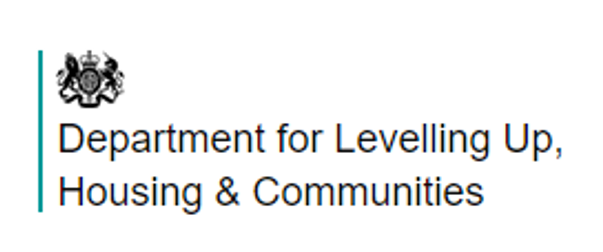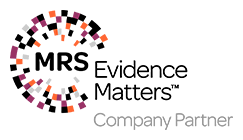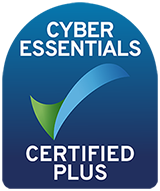Hot on the heels of the Regulator of Social Housing’s (RSH) decision statement on the Tenant Satisfaction Measures (TSMs), we alerted members to its publication and produced a set of slides featuring the key requirements and what it means for our existing suite of benchmarking metrics. This Rough Guide summarises the regulator’s requirements and should prove useful to staff and board members. In Part One, we focus on the finalised set of TSM and associated requirements as set out in Annex 4 of the RSH documentation whilst Part Two will feature the survey requirements in Annex 5.
How did we get here?
Following the terrible tragedy at Grenfell, The Charter for Social Housing Residents: Social Housing White Paper was published in November 2020 after an extensive consultation with tenants and the sector. The Charter suggests ways of improving social housing management, a key strand of which is more muscular consumer regulation with an extended brief for the RSH to actively ‘police’ yet to be revised consumer standards. The irony, for those who have been around the block, is that this development effectively reverses the Cameron government’s bonfire of regulations (and regulators) back in 2012.
Extending the RSH’s power in this way requires years to pass the legislation and develop a regulatory framework. So, the introduction of the TSMs is seen as a quick win – they have been progressed ahead of the necessary work to enable a fully functioning consumer regulator. The TSMs aim to make social landlords’ performance more transparent to tenants which facilitates accountability. They join the RSH’s existing VFM metrics as a very public incentive for boards and executives to get a grip on services. Such visibility can make and break careers.
The RSH consulted on a set of proposed TSMs in December 2021 which drew in 1098 largely positive responses. The finalised metrics were published in September 2022 in the RSH’s decision statement and accompanying annexes.
In addition to the decision statement, the key documents are:
- a new TSM standard – Annex 3: Tenant Satisfaction Measures Standard – from 1 April 2023
- 22 TSMs & detailed definitions – Annex 4: Tenant Satisfaction Measures – Technical requirements
- detailed survey requirements – Annex 5: Tenant Satisfaction Measures – Tenant survey requirements
The finalised TSMs and what changed following the consultation
12 of the TSMs are sourced from a tenant survey (hence the importance of annex 5) and the remaining 10 are generated from management information.
In reality there are 26 TSMs as four of those sourced from management information each double up as follows:
- two metrics focus on a) the proportion of complaints relative to the size of the landlord and b) the proportion of complaints responded to within the Ombudsman’s timescales. Each are split for i) stage one and ii) stage two complaints. So that’s four metrics in total.
- two metrics identify a) the proportion of total ASB cases relative to the size of landlord and, within that, b) the proportion of hate cases
- two metrics split out responsive repairs performance against targets for a) non-emergencies and b) emergencies
Most of the changes made by the RSH following the consultation were relatively minor tweaks to TSM definitions and the survey methodology. However, there were a few key changes:
- a proposed TSM was completely deleted from the final set viz: Tenant knowledge of how to make a complaint because it was a really bad idea.
- another proposed TSM has become two separate metrics. The original proposal conflated two distinct things: satisfaction with a ‘safe and well-maintained home’ which is clearly unhelpful for pinpointing what is going right or wrong. So, we now have two metrics: Satisfaction that the home is:
- a) safe (which includes common areas where applicable)
- b) well maintained
- a further TSM now has a narrower focus viz: removal of word ‘safe’ here: ‘Satisfaction that the landlord keeps communal areas clean, safe and well maintained’. As noted, safe communal areas is now bundled into satisfaction that the home is safe above.
Two further metrics might materialise in the future when government work is complete:
- electrical safety checks
- percentage of communal areas meeting the required standard
The TSM Standard
The new standard becomes operative in April 2023, so you need to familiarise yourself with it now (and set up systems to collect the data). April 2023-March 2024 will be the first year for which social landlords will be required to collect the TSMs. RSH will publish TSM results for landlords with more than 1,000 stock in autumn 2024.
The standard’s principal requirements:
- all Registered Providers (RPs) must collect & provide information to support scrutiny by tenants
- all RPs must adhere to the definitions & survey methodology requirements in:
- all RPs must annually publish their performance for their tenants
- including details of how they have met above requirements
- reporting must be timely, clear and easily accessible
- all RPs must ensure that their data is accurate, reliable, valid, and a transparent reflection of performance. As always, the board is ultimately responsible.
- • RPs with 1000+ relevant homes must also submit TSM data to RSH ie where their Low Cost Rental Accommodation (LCRA) + Low Cost Home Ownership accommodation (LCHO) = 1000+ homes (more on relevant homes below)
- • but RPs with less than 1000 relevant homes do not have to report their data to the RSH! Acuity will collect this data to facilitate comparisons amongst smaller housing associations
Who reports and when
As the TSMs are about making the RP accountable, it is the landlord/owner that reports their performance even if they have subbed out some or all of their responsibilities to a managing agent.
RPs must report on a Group basis, but they are free to additionally break it down to a subsidiary level if deemed helpful.
Those smaller RPs with less than 1000 LCRA + LCHO stock do not have to collect and report on an April-March basis if they already have different financial cycle/year end. Also, it’s up to smaller RPs whether they run the perception survey every year or every two years. Larger RPs must survey annually. All RPs must survey in the first year (2023/24). More on surveys in Part Two of this Rough Guide.
What’s counted?
Relevant homes
Only data for relevant homes should be collected:
- Low Cost Rental Accommodation (LCRA) – includes general needs (GN), supported housing, Housing for Older People (HfOP), intermediate rent and temporary social housing
- Low Cost Home Ownership accommodation (LCHO) – includes shared ownership homes (which have not been fully staircased)
Respective definitions of the above social housing draw on sections 69 and 70 of the Housing and Regeneration Act 2008.
Full detail: Annex 4: Tenant Satisfaction Measures – Technical requirements
Annex 4 provides very precise detail with regards to how a given metric is defined and also whether the metric applies to LCRA or LCHO stock or both. For example, Anti-Social Behaviour and Health and Safety TSMs should be reported for a combined LCRA and LCHO figure, whereas the two repairs satisfaction metrics, Decent Homes and repairs target times are reported for LCRA alone (because the landlord’s responsibilities are limited here to renters).
RSH requires the 12 perception survey metrics and two management information complaints metrics (four really – see above) to be reported separately for LCRA and LCHO stock. Most of you will be familiar with the phenomenon of how these two client groups perceive the world differently.
However, there is special dispensation with these particular TSMs for smaller housing associations that Acuity benchmarking members need to clock! If a RP has less than 1000 LCRA stock and less than 1000 LCHO stock, it can choose whether to report the tenant perception measures for LCRA (only), LCHO (only), LCRA and LCHO separately, or LCRA and LCHO combined. For many members it begs the question of why you would bother to report the LCHO at all given the low sample size and potential skewing effect of a combined LCRA/LCHO figure.
The same applies to the management information complaints metrics, but here you have to justify your reporting decision ‘having regard to stock profile’. My guess is that, in most cases, the very small sample sizes for LCHO will render these metrics meaningless at best and misleading at worst which seems to me a defensible position for not reporting them. But, if in doubt, check with your RSH contact.
You should note that RSH is clear that it wants LCRA reported as a consolidated figure NOT differentiated by GN, HfOP & supported housing as is customary with perception survey data. This underlines the importance of selecting similar peers when comparing consolidated LCRA metrics.
However, Acuity will enable its benchmarking members to additionally split the LCRA figure into GN, HfOP and supported should they want to. We will differentiate between variants of the same metric on data collection sheets by using the prefixes LCRA, GN, HfOP, Support and LCHO.
Dwelling units/homes
TSMs are based on dwelling units (or homes) ie:
- a self-contained unit
- a bedspace in non-self-contained housing (typically support)
Leases and leaseholders
As noted, TSMs aim to promote accountability in respect of the landlords/owners of social housing. For the purpose of TSMs, this includes a leasehold interest, ie where a RP leases from another person or organisation and lets it out to a tenant as social housing, then it must be included in the TSMs. It doesn’t matter if this person or organisation is another provider or from the private rented sector (see paragaph 19, Annex 4).
Leaseholders, on the other hand, where the occupier has purchased a leasehold interest from the RP & other non-social housing (eg market rental) are not included in the TSMs (they’re not social housing!).
What’s Acuity doing about this?
The introduction of the TSMs has implications for the existing benchmarking data you collect with us. Four tables in our slides set out, at a glance, where the TSMs step into the shoes of existing benchmarking metrics (overall satisfaction is an obvious one) and which are completely new. We have also suggested dropping a number of existing benchmarking metrics where they might double up or confuse things. This will be discussed at the autumn/winter round of meetings.
It’s likely clubs will also want to discuss, on an on-going basis, how you are grappling with the RSH’s requirements, eg getting to grips with the definitions, setting up data collection systems, whether to pilot them now and whether to conduct a baseline perception survey.
Acuity has already set the TSMs up (and the GN, HfOP and Support variants) on the benchmarking system ready for clubs to pilot them. Our satisfaction survey clients have been piloting the new questions in their surveys since April 2022.
Looking ahead, we will:
- run a TSM data workshop in March/April 2023 to help ensure data consistency and quality
- collect pilot TSM data from those who want to pilot for the year 2022/23 at our usual end of year data collection slot, ie April/May 2023. We’ll collect the existing benchmarking data at the same time as usual.
- issue TSM pilot results alongside the Acuity annual benchmarking report – June/July 2023
As always, we will be guided by our members. Please do share your thoughts at forthcoming club meetings or contact me via the website or steve.smedley@arap.co.uk.
Part two will provide a rough guide of the survey requirements. Meanwhile, Acuity’s Satisfaction Survey team is on hand to help you with your surveys whether you want a specific task undertaking or to outsource it all from conception through to surveying and reporting. Contact: denise.raine@arap.co.uk We shall also be issuing a service guide in November.







Comments are closed.